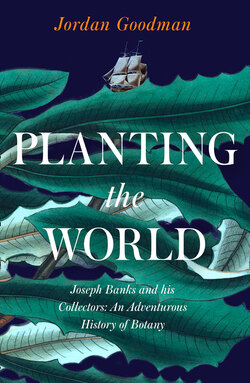Читать книгу Planting the World - Jordan Goodman - Страница 27
Preface
ОглавлениеBy 1786 Joseph Banks had been President of the Royal Society for eight years – he would continue being elected annually until his death in 1820. It was a position which gave Banks enormous prestige not only in Britain’s scientific community but also further afield. Over the following five years, Banks became a member of at least fifteen other scientific societies, some of them modelled on the Royal Society, some new, some well established, and stretching from Philadelphia to St Petersburg. Banks was now in touch with many of the world’s scientific practitioners, not only those interested in natural history, but ranging over all fields of scientific enquiry. His correspondence files grew accordingly.
Enlightening as it was, and satisfying as it must have been to be fêted by so many scientific institutions, it was Banks’s botanical projects which continued to dominate his attention. By 1786, his first collectors were either in the field or on their way. Francis Masson was at the Cape, on his second visit there, collecting living plants for Kew; Anthony Pantaleon Howe was in southwest Africa on HMS Nautilus; Archibald Menzies was on his way to the Pacific Northwest; John Duncan was already sending plants to Banks and presents to his wife Dorothea from Canton; and on the Coromandel Coast, James Anderson had written his first letter to Banks about his discovery of cochineal.
The tables and other surfaces in the library at Soho Square must have been covered with all the available texts, drawings and maps of the places where his collectors were, as Banks envisioned what they may have been experiencing. And, all the time, plant specimens were arriving, sometime at Soho Square, if, as seeds, they were in envelopes addressed to Banks; and, other times, at Customs House, if they were bulbs or living plants, needing clearance before being sent to Kew.
The geographic scope of these collections was already wide but over the next few years they spread out even further. Howe (now called Hove), who had returned from southwest Africa, was sent to western India on a secret mission; and Menzies, who had left Canton for London, would soon be on his way back to the Pacific as part of a naval convoy, commanded by George Vancouver, who had been on both Cook’s second and third voyage, to keep the delicate recently negotiated peace between Britain and Spain and to continue Cook’s survey of the Pacific coast. Menzies was mainly collecting living plants for Kew, but he also collected botanical specimens and planted seeds given to him in England and at the Cape whenever and wherever he could.
In addition to all this, Banks became involved with three other government-initiated projects before 1791. The first focused on establishing and sustaining Britain’s new penal colony in New South Wales. The second and third projects were concerned with transplanting the breadfruit tree from Tahiti to the British West Indies on specially converted naval vessels.
Banks’s experiences on the Endeavour, now more than a quarter of a century in the past, were still being called upon, and he took all the opportunities that the government projects presented him with to further his own personal project of supplying Kew with living plants from all over the world, on an unprecedented scale.
